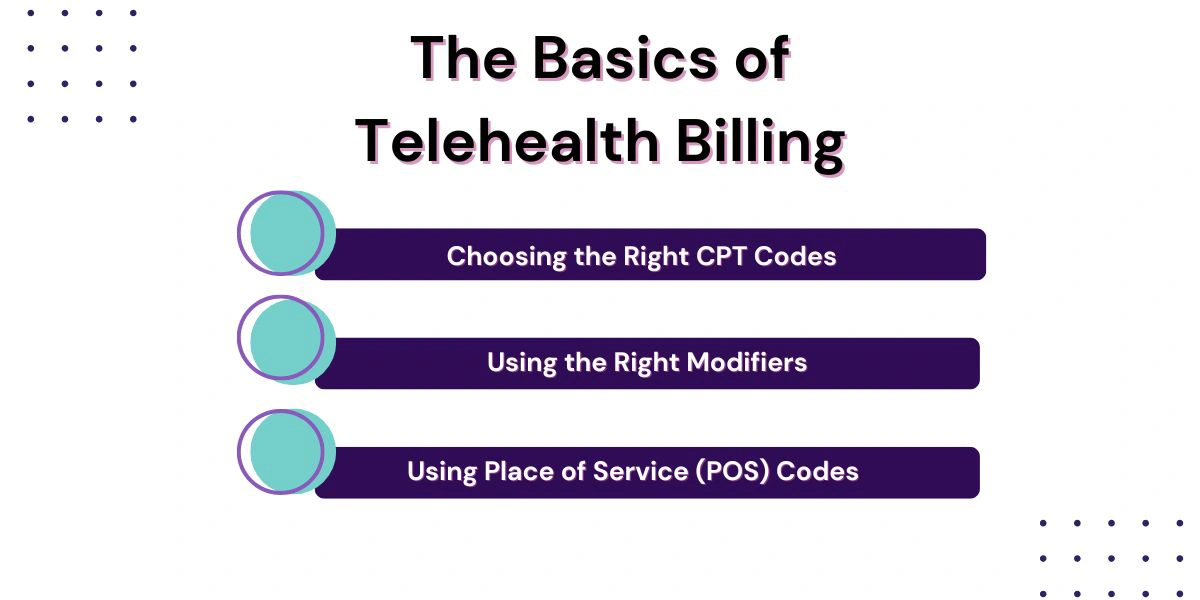Blog

Telehealth has transformed behavioral health care, offering unprecedented accessibility and convenience for patients seeking therapy, counseling, and psychiatric evaluations. For providers, however, the shift to virtual care has brought its own set of challenges, particularly in the area of billing. Drudging through the trenches of this complex world of telehealth billing requires a clear understanding of coding, modifiers, insurance verification, and compliance with payer-specific policies. This guide provides a look at how to bill for telehealth behavioral health services effectively, ensuring that you receive accurate reimbursement for your hard work.

The Rise of Telehealth in Behavioral Health
The adoption of telehealth in behavioral health surged during the COVID-19 pandemic, and its popularity continues to grow. According to a study by the Health System Tracker, over 54% of mental health therapy sessions were conducted via telehealth in 2021, a significant increase from pre-pandemic levels. This shift was driven by the need for continued access to care despite lockdowns and social distancing measures.
Telehealth’s ability to provide therapy to patients regardless of their location has proven invaluable, particularly for those in rural or underserved areas. Additionally, the convenience of receiving care from home has reduced the stigma associated with seeking mental health support. Despite these advantages, the transition to virtual care has introduced new billing complexities, especially for behavioral health providers.

Understanding the Basics of Telehealth Billing
To bill successfully for telehealth services in behavioral health, it is crucial to select the appropriate Current Procedural Terminology (CPT) codes. These codes describe the specific type of behavioral health service provided, such as individual psychotherapy, group counseling, or psychiatric evaluations. Unlike traditional in-person sessions, telehealth services require additional information to indicate that the session occurred remotely. This involves using the correct modifiers and place of service (POS) codes to ensure accurate reimbursement.
Choosing the Right CPT Codes
Selecting the correct CPT codes is the first step in billing for telehealth behavioral health services. Commonly used codes include:
- 90791 – Psychiatric diagnostic evaluation: This code is used for initial assessments to determine a patient’s mental health needs.
- 90834 – Psychotherapy, 45 minutes: This is typically used for standard therapy sessions, whether conducted individually or in a family setting.
- 90837 – Psychotherapy, 60 minutes: This code is used for more intensive therapy sessions that require a full hour.
These codes are generally the same as those used for in-person services but require additional indicators to show they were conducted via telehealth. It is essential to stay updated on the latest coding changes, as telehealth billing guidelines are frequently revised by payers, including Medicare, Medicaid, and private insurance companies.
Using the Right Modifiers
Modifiers provide additional details about the services rendered, helping payers understand the nature of the telehealth encounter. In telehealth billing, the 95 modifier is commonly used to indicate synchronous telemedicine services, which involve real-time, interactive audio and video communication. Adding this modifier informs insurers that the session was conducted remotely, which is necessary for appropriate reimbursement.
Some insurance companies may also accept the GT modifier for telehealth services. However, its usage has declined since the introduction of the 95 modifier, and many payers now prefer the latter. It is crucial to verify each payer’s requirements, as some insurers are more specific about which modifier they recognize for telehealth claims. Detailed guidelines on these modifiers can be found through the American Academy of Child and Adolescent Psychiatry.
Place of Service (POS) Codes
In addition to CPT codes and modifiers, providers must use the correct POS codes when billing for telehealth. POS codes indicate where the service was provided, which directly impacts reimbursement rates. For telehealth, the relevant POS codes include:
- POS 02 – Telehealth provided other than in the patient’s home: This is used when the patient participates in the session from a location such as a clinic or hospital.
- POS 10 – Telehealth provided in the patient’s home: This code is used when the patient receives services from the comfort of their own home.
Choosing the right POS code is critical, as it affects compliance with payer policies and ultimately determines reimbursement. Incorrect POS codes can result in claim denials or reduced payment rates. For more detailed information on POS codes, visit Provider Express.
Insurance Verification and Authorization
Before delivering telehealth services, it is essential to verify each patient’s insurance coverage. Telehealth policies vary widely among insurers, so thorough verification is necessary to avoid claim denials and ensure proper payment. Start by confirming that the patient’s plan covers telehealth for behavioral health services. This involves checking the insurance provider’s policy on virtual visits, including which CPT codes and modifiers are accepted.
Reimbursement rates for telehealth services can also differ from those for in-person sessions. It is important to clarify these rates with the insurer to manage billing expectations effectively. Additionally, some insurers require prior authorization for telehealth services. Securing this approval before the session can prevent claim denials due to lack of authorization. Finally, document all communications with insurance providers, including names, dates, and reference numbers, as this information is crucial for resolving disputes.
Behavioral Health Billing for Telehealth Services
Billing for telehealth in behavioral health requires attention to detail and a thorough understanding of CPT codes, modifiers, POS codes, and payer-specific policies. By verifying insurance coverage, maintaining accurate documentation, and staying informed about evolving regulations, you can navigate the complexities of telehealth billing with confidence.
As telehealth continues to grow, mastering these billing practices is essential for ensuring proper reimbursement while delivering high-quality behavioral health services. Learn more about how Hansei Solutions can help your behavioral health care practice billing for telehealth services.

Ready to focus on providing healthcare? Let us lighten your load.
We’re here to address your pain points and create growth opportunities for your organization. We’re passionate about what we do, and it shows in every interaction. Learn what makes us tick and schedule a demo today.